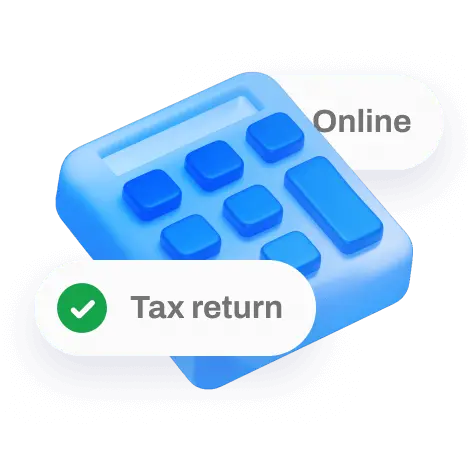Form W-7: ITIN application guide

You can obtain an IRS individual taxpayer identification number (ITIN) by completing Form W-7. Using this form, you can also renew your ITIN. - IRS
Understanding ITIN and its importance
An Individual Taxpayer Identification Number (ITIN) is a nine-digit tax processing number issued by the IRS to individuals who are required to file US tax returns but are not eligible for a Social Security Number (SSN).
If you are a US expat, a non-resident with US tax obligations, or a foreign spouse or dependent of a US taxpayer, you may need to apply for an ITIN using Form W-7.
ITINs are primarily used for tax reporting purposes and do not authorize work in the US or provide Social Security benefits.
However, obtaining an ITIN allows you to file tax returns, claim dependent exemptions, and comply with US tax laws.
Who needs an ITIN?
You may need an ITIN if:
- You are a US expat with a foreign spouse who does not qualify for an SSN but will be included on your tax return.
- You are a non-resident foreign individual who needs to file a US tax return (e.g., earning rental income from US property).
- You are a dependent or spouse of a US citizen or resident alien and are required for tax reporting purposes.
- You are a foreign student, researcher, or visa holder with US tax obligations.
- You own a business in the US and need an ITIN for tax reporting.
Pro tip: If you already have an SSN, you do not need an ITIN.
How to apply for an ITIN: Step-by-step guide
Step 1: Complete Form W-7
Download the latest Form W-7:
Form W-7 preview
Fill out the form carefully, providing the following details:
- Your full legal name (exactly as it appears on your passport or official documents)
- Your US mailing address and foreign address
- Date of birth and country of citizenship
- US visa number (if applicable)
- The reason for applying for an ITIN (check the appropriate box on Form W-7)
Pro tip: Common errors include misspelled names, incorrect addresses, and missing information, which can lead to application rejections.
Step 2: Gather supporting documents
To verify your identity and foreign status, you must provide original or certified copies of specific documents.
The best and easiest option is submitting a valid passport, which serves as proof of both identity and foreign status.
If a passport is unavailable, you must provide two different forms of identification from the list below:
| Document | Proves Identity | Proves Foreign Status | Includes Photo |
|---|---|---|---|
| Passport | ✔️ | ✔️ | ✔️ |
| National ID Card | ✔️ | ✔️ | ✔️ |
| US Visa | ✔️ | ❌ | ✔️ |
| Birth Certificate (for dependents) | ❌ | ✔️ | ❌ |
| Foreign Driver’s License | ✔️ | ❌ | ✔️ |
| Medical or School Records (for dependents under 18) | ✔️ | ✔️ | ❌ |
NOTE! If submitting alternative documents, they must be certified by the issuing agency. The IRS does not accept notarized copies.
Step 3: Attach a US tax return (if required)
Most first-time ITIN applicants must attach their US tax return (Form 1040) along with Form W-7. This is because ITINs are issued primarily for tax filing purposes.
However, some applicants do not need to attach a tax return if they meet specific IRS exceptions, such as:
- Dependents or spouses from tax treaty countries
- Foreign nationals receiving passive US income (e.g., real estate investors)
- Students, researchers, or scholars under an eligible visa
Pro tip: If unsure, including a tax return helps avoid processing delays.

Step 4: Submit your ITIN Application
Since Form W-7 cannot be filed online, you must submit it through one of these methods:
1. Mail to the IRS ITIN Processing Center:
Internal Revenue Service
ITIN Operation
P.O. Box 149342
Austin, TX 78714-9342
Using a private courier service like FedEx or UPS? Send it to:
Internal Revenue Service
ITIN Operation
3651 S. Interregional Hwy 35
Austin, TX 78741-0000
2. Use a Certified Acceptance Agent (CAA):
- CAAs can verify documents so you don’t have to mail originals.
- Find an IRS-authorized CAA here.
3. Visit an IRS Taxpayer Assistance Center (TAC):
- Some IRS offices can verify your identity in person before processing your application.
- Check office availability on the IRS website.
NOTE! Processing time is 6 to 11 weeks but can take longer if applying from outside the US.
Checking your ITIN Application status
To track your application, call the IRS:
- From the US: 1-800-829-1040
- From outside the US: 1-267-941-1000
ITIN renewal: What to do if your ITIN has expired
An ITIN expires if not used on a tax return for three consecutive years.
To renew an ITIN:
- Fill out Form W-7 and check the renewal box
- Submit updated identification documents
- A tax return is not required unless filing at the same time
- Submit the renewal form via mail, CAA, or an IRS TAC
Pro tip: Renewing before tax season helps avoid processing delays and IRS refund hold-ups.
Common ITIN mistakes to avoid
Many ITIN applications are rejected due to simple mistakes.
Avoid the following errors:
- Missing supporting documents – A certified passport copy is the best option.
- Not using certified copies – A common mistake is sending a notarized copy, thinking it’s acceptable – but the IRS only accepts certified copies from the issuing authority.
- Incorrect or incomplete Form W-7 – Ensure all fields are accurate before submission.
- Failing to attach a tax return – If required, your ITIN application will be rejected without it.

FAQ
No, ITIN applications must be mailed or submitted in person.
Processing time is 6-11 weeks, though delays are common during tax season.
No, an ITIN is strictly for tax reporting purposes and does not grant work authorization.
No, an ITIN is not a substitute for an SSN and can only be used for tax filing and reporting purposes.



